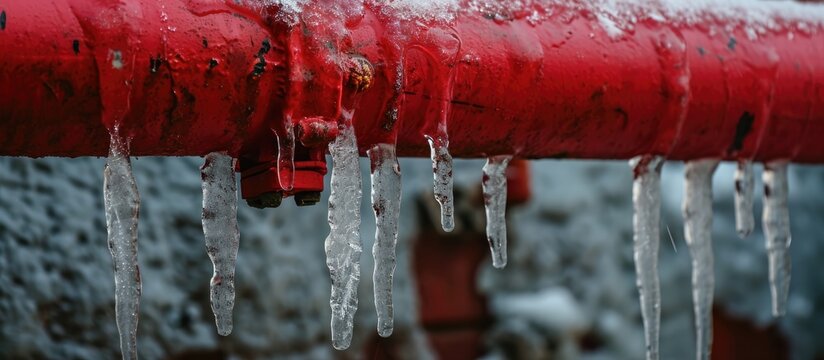Preventing Frozen Pipes in Cold Weather: Pro Tips
Preventing Frozen Pipes in Cold Weather: Pro Tips
Blog Article
Just how do you really feel when it comes to How to prepare your home plumbing for winter weather?

Cold weather can wreak havoc on your pipes, specifically by freezing pipelines. Below's how to prevent it from taking place and what to do if it does.
Introduction
As temperatures decline, the threat of icy pipes boosts, possibly causing pricey fixings and water damages. Comprehending exactly how to prevent icy pipes is crucial for home owners in cold environments.
Avoidance Tips
Protecting at risk pipes
Wrap pipelines in insulation sleeves or utilize warmth tape to protect them from freezing temperatures. Focus on pipelines in unheated or exterior areas of the home.
Heating methods
Maintain indoor rooms appropriately heated up, especially locations with plumbing. Open up closet doors to enable warm air to distribute around pipelines under sinks.
Just how to identify frozen pipes
Try to find reduced water circulation from taps, uncommon smells or sounds from pipelines, and noticeable frost on exposed pipes.
Long-Term Solutions
Structural modifications
Think about rerouting pipes away from exterior wall surfaces or unheated locations. Add additional insulation to attics, cellars, and crawl spaces.
Upgrading insulation
Invest in top quality insulation for pipes, attic rooms, and walls. Proper insulation aids preserve constant temperatures and lowers the threat of icy pipes.
Shielding Outside Plumbing
Yard hoses and exterior faucets
Separate and drain pipes garden hoses before winter months. Install frost-proof faucets or cover exterior faucets with protected caps.
Recognizing Icy Pipes
What triggers pipelines to ice up?
Pipelines ice up when revealed to temperature levels below 32 ° F (0 ° C) for extended periods. As water inside the pipelines ices up, it increases, taxing the pipeline wall surfaces and possibly causing them to burst.
Dangers and problems
Icy pipelines can cause water supply disruptions, residential property damages, and costly repair services. Burst pipes can flooding homes and create considerable structural damage.
Indicators of Frozen Pipes
Determining frozen pipes early can avoid them from rupturing.
What to Do If Your Pipes Freeze
Immediate actions to take
If you suspect frozen pipes, maintain taps available to ease pressure as the ice thaws. Utilize a hairdryer or towels soaked in warm water to thaw pipes gradually.
Final thought
Avoiding icy pipes calls for proactive actions and quick feedbacks. By comprehending the causes, indicators, and preventive measures, house owners can protect their plumbing throughout winter.
5 Ways to Prevent Frozen Pipes
Drain Outdoor Faucets and Disconnect Hoses
First, close the shut-off valve that controls the flow of water in the pipe to your outdoor faucet. Then, head outside to disconnect and drain your hose and open the outdoor faucet to allow the water to completely drain out of the line. Turn off the faucet when done. Finally, head back to the shut-off valve and drain the remaining water inside the pipe into a bucket or container. Additionally, if you have a home irrigation system, you should consider hiring an expert to clear the system of water each year.
Insulate Pipes
One of the best and most cost-effective methods for preventing frozen water pipes is to wrap your pipes with insulation. This is especially important for areas in your home that aren’t exposed to heat, such as an attic. We suggest using foam sleeves, which can typically be found at your local hardware store.
Keep Heat Running at 65
Your pipes are located inside your walls, and the temperature there is much colder than the rest of the house. To prevent your pipes from freezing, The Insurance Information Institute suggests that you keep your home heated to at least 65 degrees, even when traveling. You may want to invest in smart devices that can keep an eye on the temperature in your home while you’re away.
Leave Water Dripping
Moving water — even a small trickle — can prevent ice from forming inside your pipes. When freezing temps are imminent, start a drip of water from all faucets that serve exposed pipes. Leaving a few faucets running will also help relieve pressure inside the pipes and help prevent a rupture if the water inside freezes.
Open Cupboard Doors
Warm your kitchen and bathroom pipes by opening cupboards and vanities. You should also leave your interior doors ajar to help warm air circulate evenly throughout your home.

I hope you enjoyed reading our piece about 6 Ways to Prevent Frozen Pipes. Thank you for taking time to read through our blog post. Enjoyed reading our content? Please quickly share it. Help someone else locate it. Many thanks for taking the time to read it.
Visit Page Report this page